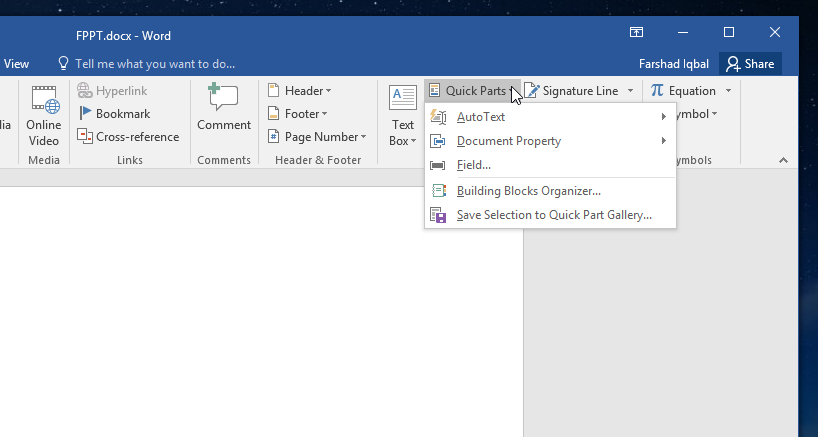

- #How to change header in word mac how to#
- #How to change header in word mac for mac#
- #How to change header in word mac pdf#
#How to change header in word mac for mac#
But, with very minor modifications, they can be used for Office 2016 for Mac and Office 2010 for Windows as well. Note: The instructions below are mainly based on Office 2013 for Windows. This includes modifications needed for a low vision student or a student with other reading/visual processing issues. to globally modify content by changing one Style setting.
#How to change header in word mac pdf#
export to a tagged PDF or to an InDesign template)


Most of these fields are also available directly from the Categories: (All) list. The Property: list at right contains the values set in Options, including Author, Title, Revision Number, Company, LastPrinted, and Subject. Click Insert > Quick Parts > Field… and select DocProperty in the Field names: list. I realize the original post was from 10 years ago, but there are already built-in field codes you can insert for all these document properties. Instead of using a text box, can you use a borderless table instead to emulate the layout you want? Good pickup on your part, but a pain if you wanted to use it! So, it looks like Word ignores any styles in text boxes for the purpose of the StyleRef field. When I tried to insert the StyleRef field into the table cell, Heading 2 WAS listed as an available style, as I expected. It was the only Heading 2 style used in my test doc. I repeated the test, but this time with text outside a text box, styled with Heading 2. Guess what? I got the same result as you - a style used in a text box is NOT listed in the available styles for the StyleRef field. I just did a quick test by adding a text box to an empty Word doc, styling it with one of the default styles (‘Subtitle’ in this case), then adding a table and trying to insert a StyleRef field to ‘Subtitle’ into a table cell. My personal opinion of text boxes in Word is that they are the spawn of the devil, and I avoid them wherever possible! I doubt that I can get users to stop pressing ‘Return/Enter’ when filling in this information and was wondering if anyone has a hint/solution/macro that could help? This might be a stretch but do you know if there is a way to set a macro for the StyleRef that eliminates the ‘Return/Enter’ line jump before populating the footer? by Elyssa Ideally, the two lines would appear in the footer on the same line. When they do this, only the second line of the entered info gets displayed in the footer even though both lines within the table are the correct referenced style. Users, in an attempt to control how those two lines are split, will hit ‘Return/Enter.’ In the cell that the StyleRef is pulling information from, the entered info often gets pushed to a second line within the cell. There is one issue that I cannot find the answer to: Hi Rhonda! I have set up a few templates for my office that use this technique. Don’t worry about formatting - the header/footer styles will control that. For example, DocAuthor, DocDate, DocTitle, DocRevNum. Give these styles names that are unique and are unlikely to be used anywhere else in the document (this is critical). Create new styles for the text elements you want to capture.Note: The StyleRef field will NOT ‘see’ any styles used in text boxes (see the comment from November 2017 below).
#How to change header in word mac how to#
Before attempting this, you should know how to create a new style in your version of Word. This solution works in Word 2003, Word 2007 and Word 2010 at least. to do this, here’s a really quick solution using styles and the StyleRef field. While you can set up all sorts of macros, cross-references, document property fields etc. You may also be required to insert some of these details into the header and/or footer of the Word document. Many corporate documents require you to have a table near the beginning of the document with details such as the author, the date created, a revision number etc.


 0 kommentar(er)
0 kommentar(er)
